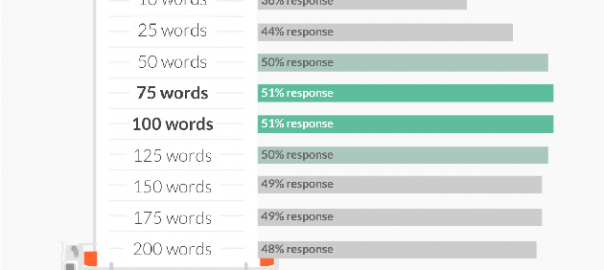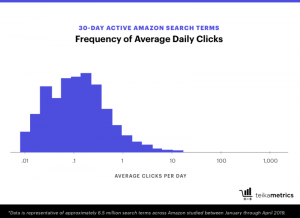When you send an email, you are probably expecting a response. Sometimes that response comes and sometimes all you hear are the sounds of crickets.
The next proper step that you think of is to follow up. You want the answers to the questions you have. Or maybe you need the answers because they are vital to a business transaction. Maybe it’s not a questioning thing, but maybe the follow-up is vital to your networking skills. You need to stay top of mind with your contacts to grow your business.
Don’t worry, you are not alone in this. We know these challenges all too well.
You’ve sent dozens of follow-ups for one or both of the reasons above; how do you know if they are working? You’ve gotten a few replies, but some of your follow-ups are still hanging out in the ether of the dark email universe.
Are you sending out follow-ups blindly? Or are you measuring the performance of your follow-ups? What are the metrics you need to keep tabs on so that your follow-ups get answered? Over the past year, our users have sent millions of follow-ups out of Contactually and here are the top 7 metrics to measure for your follow-up performance.
What you start measuring for your follow-ups…
1. # of Follow-Ups Sent
How many follow-ups have you sent in the day or week? How many did you send before you got a response?
Knowing the just how many follow-ups you have sent is important to your overall communication strategy. You’ll be able to see how many emails you are sending out in response to previous correspondence. And furthermore, knowing this number is important to the metrics outlined below.
If you already know the person who you are following up with, you may not need to follow-up 8 different times to get a response. This number can give you a glimpse into your communication strategy and if you are following up too much (or not enough). Measuring the number of follow-ups you’ve sent can give you a more holistic picture into the lifecycle of your relationships in your contact database.
2. Open Rate
If you use a specific email marketing software, you may already be familiar with this metric. The open rate measures how many people have opened your email.
By now, you may know how many follow-ups you’ve sent. If you haven’t gotten any responses, they may not have been opened in the first place. The open rate can be affected by the subject line and the time sent. Measuring your open rate sets the foundation in determining how effective your follow-ups are in the first place.

To calculate the open rate, find the number of follow-ups that have been opened and divide it by the number of follow-ups sent. Then, multiply by 100 to get your open rate.
Setting your goals high for a 100% open rate might be ambitious, but if you know the person and are following up in a way that is personalized to your relationship, that isn’t so ambitious. Use the other metrics in this post to help you get to that high open rate.
3. # of CTAs in the Follow-Up
When you are sending your follow-up, what do you want the recipient to do? A reply back is the first step, but what is the main reason why you are sending the follow-up? Are you looking for a specific answer to a question you’ve asked? Are you looking for a referral?
Figure out your main objective and include it as a fluid “CTA” or call-to-action. In marketing, a CTA often takes the form of a button on a page that gets someone to click. We are not saying you should include buttons in your personalized follow-ups, but you should include what you want the person to do.
Measuring how many CTAs you have in your follow-up will show you if you are asking people to do too many things, and then you don’t get the response you need; or, you aren’t asking for anything and you still don’t get any replies. Define the what you are looking to get out of the follow-up and add it as a call-to-action in the note. Whether it’s to respond directly to the email or to give you a call when they get the message, add it to your follow-up.

And keep it to a 1:1 ratio: One follow-up to one call-to-action.
4. Response Time
When you send a follow-up, do your recipients follow up quickly? Or do they respond a month later, when you may have forgotten that you’ve followed up in the first place? How long does it take you to follow up again after the first time?
Did you know that most sales people do not follow up after one time? Think about how much business is lost. Don’t let that happen to your business.
Follow-ups are a timely form of communication and they go stale without some care and feeding. Don’t just look at how long it takes for someone to reply to you, also look at how long it takes for you to reply to the response you’ve received.
5. Reply Rate
Reply rate will measure the direct performance of your follow-ups. Out of all of the follow-ups you have sent, how many have been replied to? If your follow-ups are subpar, you’re probably not receiving the replies that you want.

To calculate your reply rate, look at the number of follow-ups you sent in the past week and then the number of responses you received. Divide the replies by the number of follow-ups sent and then multiply by 100 to get the reply rate percentage.
6. Word Count
How long are your follow-ups? If you’re writing a novel and reading this sentence…your follow-ups are too long. Don’t worry, it’s not too late.

via The Atlantic and Boomerang
Keep your follow-ups short and to the point. There’s no need to ramble on. Boomerang found that emails that have between 75-100 words gain more responses.
Unsure if your follow-up is too long? Copy and paste your follow-up into a Word doc or a Google doc and do a quick word count check to see. If it’s too long at that point, cut some sentences you do not need. Remember: Fewer words lead to more responses.
7. Time Sent
As we mentioned earlier, the time you send your follow-up can affect your open rate. However, not only can it affect your open rate, it can also have implications for your response rate and if your recipients act on the CTAs you put in your follow-up.
If you search for the best time to send an email, you’ll find thousands of results. This isn’t a bulk email you are sending out — this is a personalized follow-up. You need to take a look into your own email system to see when you can optimize on the time sent.
Check your inbox and see when you are actively sending emails out. Look at what time emails are coming in from clients. And lastly, research best practices from your own industry. You may get generalized information if you do a broad search, but it’s best to take a targeted approach that will have more success with your audience. Once you’ve gathered these data points, you can make an educated conclusion on the best time you should send your follow-ups.
You’ll need to reiterate on this, as it might change depending on the time of the year. Yet, measuring the time you send your follow-ups is key to your follow-up strategy.
It’s time to measure up!
If you are sending follow-ups blindly, then it’s time to stop. Not every effort needs to be measured. But follow-ups are probably important in cultivating your network. Then, if your network grows your business, measuring your follow-ups is crucial in helping the success of your business. Use these metrics to identify where you can improve and scale your follow-up strategy.
Digital & Social Articles on Business 2 Community
(113)





